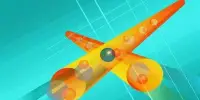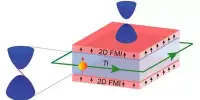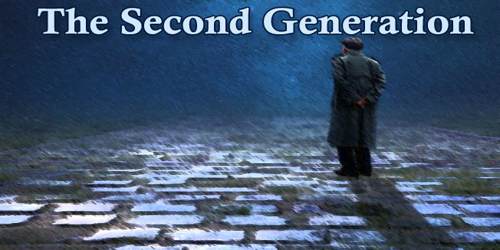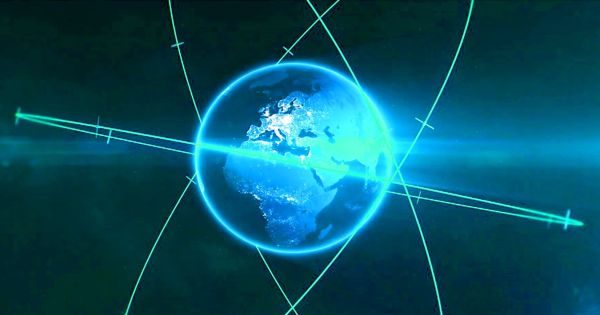When certain materials are cooled to a certain temperature, their electric resistance decreases and they become superconductors. In this state, an electric charge can travel indefinitely through the material, making superconductors a valuable resource for transmitting large amounts of electricity and other applications. Superconductors transport electricity from Long Island to Manhattan. They’re found in medical imaging devices like MRI machines, particle accelerators, and magnets like those found in maglev trains. When sufficiently cooled, even unexpected materials, such as certain ceramics, can become superconductors.
However, scientists have not previously understood what happens in material to cause it to become a superconductor. Specifically, the mechanism of high-temperature superconductivity, which occurs in some copper-oxide materials, was previously unknown. A 1966 theory investigating a different type of superconductor proposed that electrons spinning in opposite directions bind together to form what is known as a Cooper pair, allowing electric current to pass freely through the material.
A pair of studies led by the University of Michigan investigated how superconductivity works and discovered that the 1966 theory accounts for about 50% of superconductivity – but the reality, as examined in the second paper, is a bit more complicated. The research was led by recent U-M doctoral graduate Xinyang Dong and U-M physicist Emanuel Gull, and it was published in Nature Physics and the Proceedings of the National Academy of Science.
Gull explained that electrons floating in a crystal require something to hold them together. When two electrons are bound together, they form a superconducting state. But what connects these electrons? Electrons typically repel each other, but the 1966 theory suggested that in a crystal with strong quantum effects, the electron-electron repulsion is being screened, or absorbed, by the crystals.
There’s no reason why there should be a simple picture that explains everything when you have a complicated many-electron system with many quantum particles. In fact, we discover that a scenario like the 1966 theory captures quite a bit of stuff but not everything.
Emanuel Gull
While the electron repulsion is absorbed by the crystal, an opposite attraction emerges from the spinning properties of the electrons, causing the electrons to bind in Cooper pairs. This explains the lack of electronic resistivity. However, the theory fails to account for complex quantum effects in these crystals.
“That is a very simple theory, and it has been around for a long time. It was essentially the theoretical message of the 1980s, 1990s, and 2000s “Gull explained. “You could write down these theories, but you couldn’t really calculate anything; if you wanted to, you’d have to solve quantum systems with many degrees of freedom. And now, my graduate student has written codes that do exactly that.”
For the paper published in Nature Physics, Dong probed this theory by using supercomputers to apply what’s called the dynamical cluster method to a copper-oxide-based superconductor. In this method, the electrons and their spin fluctuations are computed together, allowing the researchers to do a quantitative analysis of the interactions between the electrons and their spin.
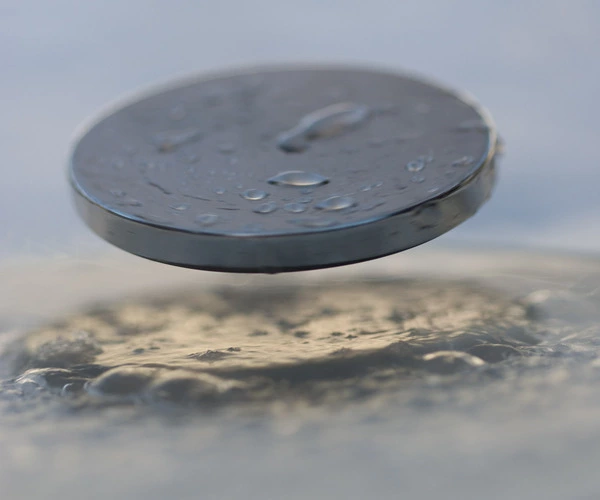
Dong examined the magnetic spin susceptibility, which is the main quantity of spin fluctuation, in the regions where the material becomes a superconductor. She calculated the susceptibility and the region, and then analyzed the region with Gull and Andrew Mills, a physicist at Columbia University.
The researchers were able to test the prediction of simple spin fluctuation theory using this spin susceptibility. This theory was found to be 50% consistent with superconductivity activity. That is, the fluctuation theory can account for roughly half of a material’s superconductivity.
“That’s a big result because we’ve shown that this theory works, but it also doesn’t capture everything that’s going on,” Gull said. “Of course, the question is what happens to the other half, and this is where the theoretical framework of the 1960s was too simple.”
Gull and Dong investigated the other half in a paper published in PNAS. They went back to look at electron systems in a simplified model of a superconducting crystal. Layers of copper-oxygen bonds can be found in this copper-oxide crystal. The copper atoms form a square lattice, and each atom is missing one electron in this configuration.
When physicists add an element such as strontium, which will share an electron with the copper-oxygen layer, to the material the material becomes a conductor. In this case, strontium is called a dopant atom. Initially, the more charge carriers you add, the more superconducting the material will become. But if you add too many charge carriers, the superconducting property goes away. Peering into this material, Gull and his co-authors examined not just the electrons’ spin, but also their charge fluctuations.
According to Gull, the fluctuations that are useful for understanding the system appear in two ways: the signal is at a single momentum point, and the signal is at a low frequency. A single momentum low frequency excitation indicates the presence of a long-lived excitation, which allows researchers to see and describe the system.
The majority of the superconductivity was found to be due to antiferromagnetic fluctuations (when electrons spin in the opposite direction). They did, however, observe ferromagnetic fluctuations that counteracted the antiferromagnetic fluctuations, bringing them back to the 50% finding.
“There’s no reason why there should be a simple picture that explains everything when you have a complicated many-electron system with many quantum particles,” Gull said. “In fact, we discover that a scenario like the 1966 theory captures quite a bit of stuff — but not everything.”
Gull says the next step will be to see if their findings can help them predict specific types of spectra, or reflected light, in superconductors. He also hopes that the findings will help physicists understand how superconductors work and, as a result, design better superconductors.

